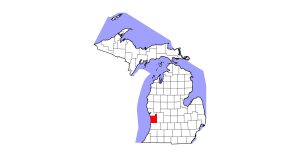Causes of Death in Ontario Racehorses Examined
- Topics: Anatomy & Physiology, Article, Breed-Specific Health Issues, Cardiovascular System, Competition News & Issues, Diseases and Conditions, Equine Care Professions, Exercise Induced Pulmonary Hemorrhage (EIPH), Fractures, Heart & Cardiovascular Problems, Horse Care, Horse Industry News, Injuries & Lameness, More Diseases & Conditions, Musculoskeletal System, Quarter Horses, Respiratory Problems, Sports Medicine, Thoroughbred Racing, Thoroughbreds, Vet and Professional, Veterinary Practice

Veterinarians and researchers are on an ongoing mission to reduce the number of racehorse injuries and deaths during racing and training. Key to achieving that is documenting and scrutinizing the incidents that do occur to look for trends that could lead to answers.
Researchers in Ontario, Canada, recently completed a retrospective study of racehorse post-mortem reports submitted to the Ontario Racing Commission (now the Alcohol and Gaming Commission of Ontario) Death Registry over a 13-year period.
“It is important to document the exact numbers of horses that succumb to these conditions in order to target further research to identify preventive measures,” said Josepha DeLay, DVM, DVSc, Dipl. ACVP, a veterinary pathologist at the University of Guelph’s Animal Health Laboratory
Create a free account with TheHorse.com to view this content.
TheHorse.com is home to thousands of free articles about horse health care. In order to access some of our exclusive free content, you must be signed into TheHorse.com.
Start your free account today!
Already have an account?
and continue reading.
Written by:
Katie Navarra
Related Articles
Stay on top of the most recent Horse Health news with















